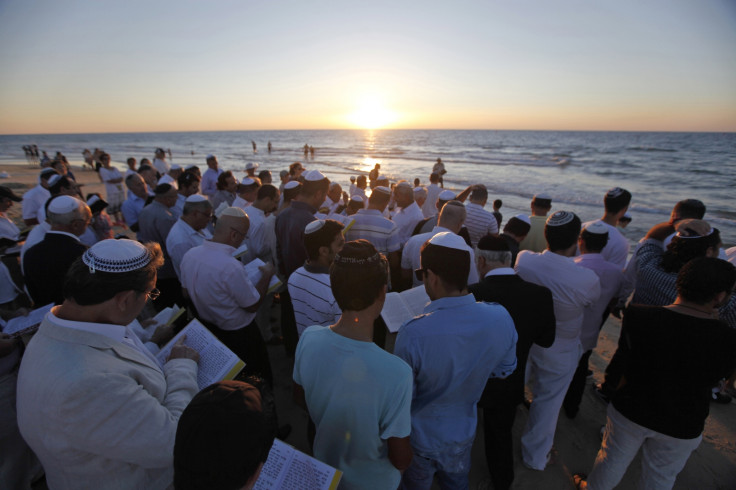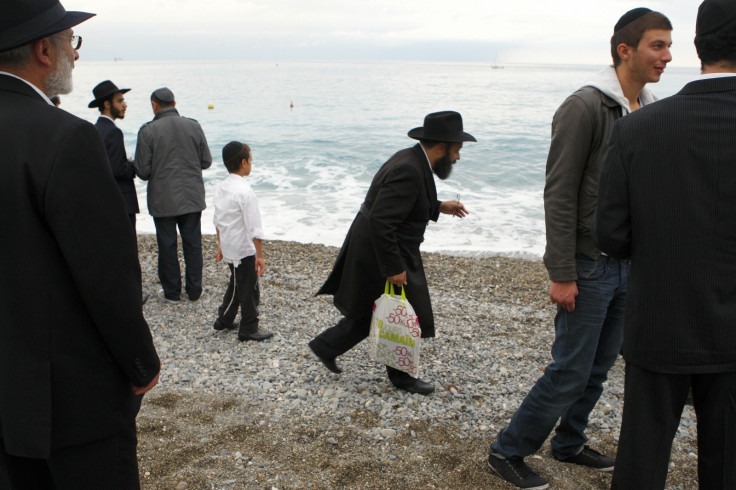Rosh Hashanah 2014: How is the Jewish New Year Traditionally Celebrated?

Tomorrow marks the beginning of Rosh Hashanah, the Jewish New Year, the first of the High Holy Days which in occur in the early autumn of the northern hemisphere.
The first day of the 48-hour celebration is called Tishrei, and is believed to be an anniversary of the creation of Adam and Eve. There are a number of ways the festival is celebrated.
Simon Morris, chief executive of Jewish Care, the UK's largest social welfare organisation, told IBTimes UK that Rosh Hashanah is one of the most important festivals in the Jewish calendar.
"We celebrate with our clients in the traditional Jewish ways, dipping apple in honey, eating honey cake, enjoying a festive meal, lighting candles for the festival, hearing the Shofar and giving them the opportunity to go to a synagogue service if they'd like to.
"For many Rosh Hashanah is a special time of year to share with family. Some of our clients live alone with few family networks so we work hard to make them feel part of our wide reaching Jewish Care family."
Shofar
A shofar is an ancient musical instrument made from a horn, traditionally from a ram. It is played in Jewish synagogue services on Rosh Hashanah and Yom Kippur, the Day of Atonement, which is the holiest day of the year for the Jewish people.

The shofar is mentioned frequently in the Hebrew Bible, the Talmud and in rabbinic literature, and it is sounded just before, during and after the Musaf prayer on Rosh Hashanah.
Like the modern bugle, all pitch control is done by varying the player's embouchure. Playing the shofar is one of the activities that Jewish Care workers invite the community to do.
"On Rosh Hashanah we invite the community to join older people in our care homes and community centres whether it's by taking part in a service in one of our many volunteering synagogues, blowing the shofar, chatting over a cup of tea with honey cake or coming to a celebratory Rosh Hashanah meal," Morris explained.
"All of this helps to make Rosh Hashanah a special time of year for us and our Jewish Care family of 7,000 members."
Wearing white
When attending the synagogue, white or light colours are traditionally worn to symbolise new beginnings.
It represents purity and renewal, and is believed to reflect a nearness with G-d (the custom of substituting the word "God" with G-d in English is based on the practice in Jewish law of giving the Hebrew name for God a higher degree of respect)
Observing Tashlich
Tashlich, meaning "casting off", is the process of going to a flowing body of water and emptying your pockets.

In modern times, many throw breadcrumbs, and it is normally observed on the first day of Rosh Hashanah to symbolise casting off your sins.
The name Tashlich and the practice itself are derived from a Biblical passage in the book of Micah, recited at the ceremony: "You will cast all their sins into the depths of the sea."
Apples dipped in honey
One of the most popular and well-known customs on Rosh Hashanah is dipping sliced apple into honey, an age-old tradition to express home for a sweet new year.
According to Jewish mythology, the apple represents the Shekhinah – the feminine aspect of God – and eating honey with apples is said to encourage Shekhinah to judge kindly.
In addition, ancient Jews believed apples had healing properties. In The Second Jewish Book of Why, Rabbi Alfred Kolatch wrote that the fruit was frequently sent as gifts to those with ill health during Talmudic times.
Candle lighting
Candles are lit to bring in the Jewish holidays with warmth and light. As Jewish days begin with the setting sun, a lit candle is believed to create a sacred space.
The number of candles depends on preference and tradition and some light one candle for each member of the family.
Lighting two candles, though, is standard practice based on several reasons: the male and female aspects of God's presence or the two words, zachor-remember and shamor-keep, that the Torah uses to urge Shabbat observance (the Jewish day of rest).
© Copyright IBTimes 2024. All rights reserved.





